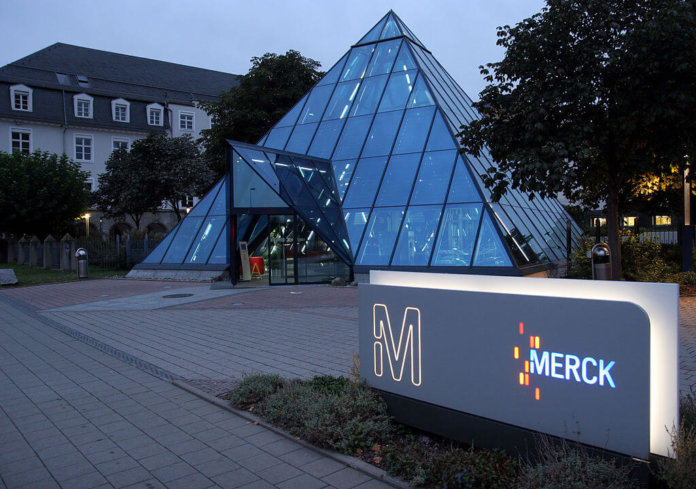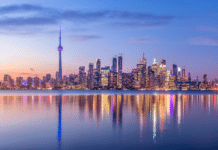
In 2014, the global pharmaceutical industry generated revenues of over $1 trillion for the first time in history. This titanic industry generates higher profit margins than any other and is expected to continue its growth on the back of aging developed countries and rising incomes in developing markets.
Check out our list of the top 10 major pharmaceutical companies in the world:
10. Gilead Sciences
Revenue (2014): $24.5 billion
Country of Origin: USA
Founded: 1987
Employees: 7,500
The California-based Gilead Sciences was founded by doctor Michael L. Riordan when he was only 29 years old. The company primarily developed antiviral vaccines with a particular focus on treating sexually transmitted diseases like HIV.
In 2013, Gilead Sciences wowed the medical community when it developed Sovaldi, a hepatitis C treatment that boasted a 90% cure rate in clinical trials. But when Sovaldi hit the market, insurers and 3 million patients suffering from the disease were stunned when they saw the price tag – $84,000 for a 12-week course of treatment, translating to a mind-boggling cost of $1,000 a day. Despite the controversy, Sovaldi went on to make $53 million in three months of its release.
9. AstraZeneca
Revenue (2014): $26.09 billion
Country of Origin: UK/Sweden
Founded: 1999
Employees: 50,000
AstraZeneca was founded in 1999 through the merger of the and the UK-based Zeneca Group and Astra AB, a Swedish company founded 100 years earlier by 400 doctors and apothecaries. Today, the company’s primary focus includes treatments for major disease areas such as cancer, neuroscience, and inflammation.
In 2014, AstraZeneca rejected an acquisition offer from Pfizer for £55 per share, which valued the company at $117 billion. The takeover would have catapulted U.S.-based Pfizer to become the world’s biggest drug maker, and would also have been the biggest foreign takeover of a British company had it gone through. The deal faced intense opposition from numerous British politicians and scientists, with one Member of Parliament calling Pfizer “rapists”, tweeting, “(Prime Minister David) Cameron dare not stop Pfizer because he dare not offend the U.S. in any way. Roll up rapists.”
8. GlaxoSmithKline
Revenue (2014): $34.65 billion
Country of Origin: UK
Founded: 2000
Employees: 97,921
GlaxoSmithKline is a British pharmaceutical company that was established in 2000 by a merger between Glaxo Wellcome and SmithKline Beecham. Today, it operates in over 115 countries and is best known for its asthma treatment drug Advair.
In 2012, the company pleaded guilty to criminal charges in the United States. It agreed to pay a $3 billion settlement when it was convicted on a number of charges including promotion of drugs for unapproved uses, failure to report safety data about the diabetes drug Avandia, reporting false prices to Medicaid, and kickbacks to physicians. It was the largest health-care fraud case in American history and the largest settlement by a drug company. Following the conviction, GSK said that it would no longer pay physicians to promote its drugs or attend medical conferences, and would abolish prescription targets for its sales staff.
7. Sanofi S.A.
Revenue (2014): $36.73 billion
Country of Origin: France
Founded: 2004
Employees: 112,128
In 2004, Sanofi was formed as Sanofi-Aventis through the merger of Aventis and Sanofi-Synthélabo, which were each the product of several previous mergers. Since its creation, Sanofi has strengthened itself by continuing to acquire other pharmaceutical companies – in the last 8 years it has purchased Praque-based Zentiva, Brazil-based Medley Farma, and India-based Shantha Biotechnics among others.
Sanofi covers seven majors therapeutic areas through its prescription drugs. Its best known drugs include Allegra, Gold Bond, Icy Hot, and the pet medication Frontline.
6. Merck & Co.
Revenue (2014): $42.2 billion
Country of Origin: USA
Founded: 1891
Employees: 68,000
Merck was once a subsidiary of a German parent company also called Merck. In 1891, the company was established in New York City when George Merck immigrated to the USA to set up the arm of his family company. When World War I broke out, the company was confiscated and nationalized into an independent American company by the U.S. government as part of its wartime policy.
Today, the company is known as Merck in America but MSD in the rest of the world, where the original Merck of Germany retains its name. In 2015, the German Merck stressed its intention to protect the brand of “the real Merck” worldwide. The company is best known for creating the first mumps and rubella vaccine, which were developed by Merck scientist Maurice Hilleman. She also created the first hepatitis B vaccine as well as the first varicella vaccine for chickenpox.
5. Bayer
Revenue (2014): $45.84 billion
Country of Origin: Germany
Founded: 1863
Employees: 118,900
Bayer is one of the most recognized pharmaceutical companies in the world, but its rise is a fascinating story. Bayer’s first and most well-known product is Aspirin, which was developed in 1897. A year later, the company followed up by marketing heroin as a cough suppressant and a non-addictive substitute for morphine and led the commercialization of the drug.
During World War I, Bayer lost its trademark of Asprin in the U.S., after the company’s assets and trademarks were seized during America’s campaign against Germany. Bayer lost its U.S. business after World War II when it was judged for participation in Nazi war crimes through its parent company, IG Farben. However, IG Farben was broken up after WWII and Bayer became independent again, and in 1978 it bought back its name in the U.S.
4. Roche Holding AG
Revenue (2014): $47.63 billion
Country of Origin: Switzerland
Founded: 1896
Employees: 88,509
Fritz Hoffman-La Roche founded Roche in Basel, Switzerland in 1896 during the European industrial revolution. Within the first few years, company pharmacist Carl Shaerges and chemist Emil C. Barell successfully developed the first in a series of thyroid medications. In 1898, they also produced a non-prescription cough syrup called Sirolin, which was combined with an orange-flavored syrup.
Despite the devastating effects both World Wars had on Roche, it quickly recovered thanks to its line of vitamins, and became the first company to mass-produce synthetic vitamin C. However, its rise was marred with controversy in 1999, when the company pled guilty to a worldwide conspiracy to raise and fix prices for its vitamins, forcing it to pay $500 million in criminal fines. Today, the company has a hand across the entire spectrum of the healthcare industry and its best-known products include benzodiazepines, a class of psychoactive drugs, Valium and Rohypnol.
3. Pfizer
Revenue (2014): $49.61 billion
Country of Origin: USA
Founded: 1849
Employees: 78,300
Pfizer was founded in 1849 by cousins Charles Pfizer and Charles Erhart with $2,500 in seed money borrowed from Pfizer’s father. Combining the skills of both men, Pfizer, a chemist, and Erhart, a confectioner, developed their first product santonin, an antiparasitic. It was used to treat intestinal worms, a common affliction in mid-19th century America. The almond-toffee flavored drug was an instant success.
Throughout the 1980s and 1990s, Pfizer developed many of today’s best-known pharmaceutical drugs such as Zoloft, an antidepressant, Lipitor, for lowering blood cholesterol, and Viagra, used to treat erectile dysfunction. Despite it being ranked 3rd, Pfizer is the most profitable drug company in the world, with a profit margin of an astounding 43%, worth $22 billion.
2. Novartis
Revenue (2014): $57.99
Country of Origin: Switzerland
Founded: 1996
Employees: 120,000
Novartis was founded in 1996 through a merger between Ciba-Geigy and Sandoz, two Swiss companies founded over 250 years ago. The company ranks as the second largest pharmaceutical company in the world. it is recognized as the biggest spender on research, investing $9.9 billion in R&D.
Novartis is currently divided into three core operating divisions: Pharmaceuticals, Alcon (eye care) and Sandoz (generics). Its eye care division is the leader in its segment while its generics business is the second largest in the world. Novartis’s best-selling drug, a cancer drug called Gleevec, generated sales of $4.7 billion in 2015 alone.
1. Johnson & Johnson
Revenue (2014): $74.3 billion
Country of Origin: USA
Founded: 1886
Employees: 126,500
Johnson & Johnson is not only the largest pharmaceutical company in the world, it also one of the most well recognized companies as well. The company was founded in 1886 by the three Johnson brothers Robert, James, and Edward. They had been alerted to the serious need of antiseptics in preventing illness and death. Upon its creation, Johnson & Johnson pioneered the first commercial first aid kits and was also the first to produce sanitary products for women, dental floss, and commercial dressings for small wounds.
Today, Johnson & Johnson manages over 250 subsidiaries in over 57 countries, with its business split into three areas: pharmaceuticals, diagnostics, and consumer products. J&J are the maker of iconic products such as Band-Aid, Tylenol, Rogaine, Johnson’s baby products, and Neutrogena skin care.









